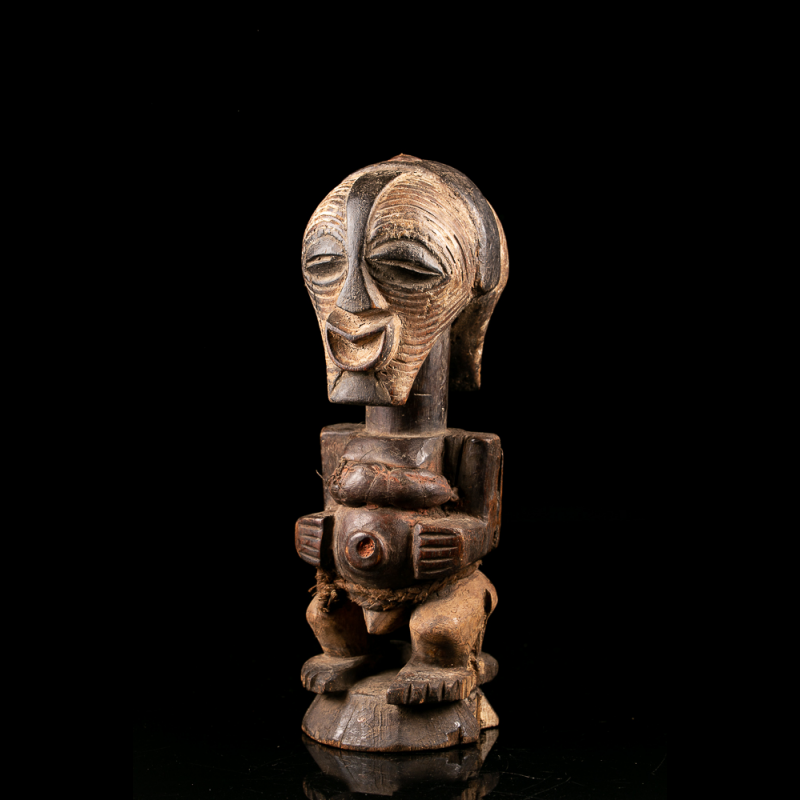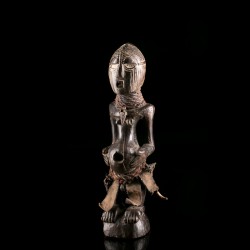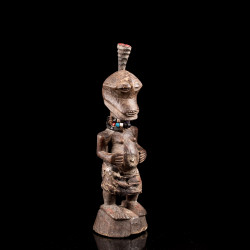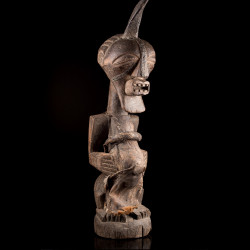















This group of magico-protective African objects originates from the southeastern region of the Songye country.
Their characteristic is an anthropomorphic figure, in some cases janiform as here, with the face represented as a kifwebe mask.
This type of mask was common to Songye and neighboring Luba people and, in male and female versions, had major symbolic importance.
In traditional African societies, when masks appeared, people left the dimension of the visible to enter that of the invisible.
Masked mankishi could thus take on the identity of spirits, ancestors or founding heroes.
In this dimension, they also operated as instruments of justice and social control that reinforced the power of chiefs and notables.
Data sheet
You might also like

This group of magico-protective African objects originates from the southeastern region of the Songye country.
Their characteristic is an anthropomorphic figure, in some cases janiform as here, with the face represented as a kifwebe mask.
This type of mask was common to Songye and neighboring Luba people and, in male and female versions, had major symbolic importance.
In traditional African societies, when masks appeared, people left the dimension of the visible to enter that of the invisible.
Masked mankishi could thus take on the identity of spirits, ancestors or founding heroes.
In this dimension, they also operated as instruments of justice and social control that reinforced the power of chiefs and notables.


